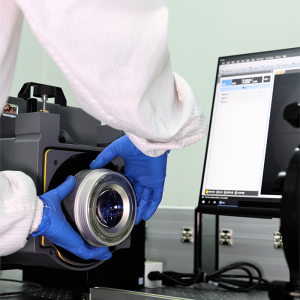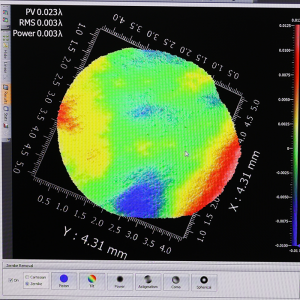Interferometry is a technique that performs measurements no other technique can. So, what is interferometry? What is the purpose of interferometry? This article will cover all you need to know about it.

Interferometry is a method that extracts information through the interference of overlapping waves. This process is carried out using an interferometer.
Interferometers combine many sources of light to produce an observable diffraction pattern. One light beam engages with the object being analyzed, and the other beam does not, leading to constructive interference, which produces a pattern that researchers can use to collect accurate measurements.
Interferometers are commonly used to make observations that would otherwise be impossible to make. This explains why their identification of gravitational waves is so effective and vital.
Interferometry’s usefulness has made it a prominent tool for multidisciplinary research in the modern world, and it has spread to fields of engineering, oceanography, seismology, fiber optics, and others.
Twyman-Green interferometers are used as polarizing interferometers with variable amplitude balance between reference and sample waves.
You can use absolute measurement to determine the instrument error for a precise test surface measurement. This inaccuracy is rectified by storing the error in a microprocessor system and deducting it from the test surface measurement.
Here are a few advantages of using a Twyman-Green Interferometer:
The Michelson interferometer comprises a monochromatic light source, a pair of optics mirrors, and a beam splitter. The interferometer operates on the principle of constructive and destructive interference, whereby one mirror remains stationary while the other is displaced.
When monochromatic light from a far-off source hits a beam splitter, it is divided into two parallel beams of the same intensity, but these beams move in different directions (at a right angle)
One beam travels to mirror M1, while the second beam travels through the beam splitter and hits Mirror M2. M1 and M2 mirrors are reunited at the partially reflective surface, and both reflect the rays back. After that, it is sent to the eye.
The first optic mirror, M1, can be moved, while the second, M2, is stationed in one position. A standard beam is created by using the reflected ray from M1. When the two mirrors are equally distanced from the beam splitter, an observer will display constructive interference in the form of a bright spot.
If the M1 is moved by a quarter of a wavelength, the beam will return the observer 180 degrees out of phase, and darkness is seen as a result of destructive interference.
The optical path will move by one wavelength for every half wavelength the mirror moves, and the phase of the reflected beam will divert by 360 degrees.
To ensure that each mirror M. route has the same proportion of glass inserted, a compensator plate is used.
As the mirror moves, the reflected beam from the positioned mirror and the reflected beam from the other mirror may reconnect at the beam splitter, where they may either strengthen or cancel each other out.
Here are some conditions that can help make using a Michelson interferometer better:
It is used to measure refractive indices, speeds, angles, displacement, derived dynamic and static parameters, and high-precision length measurements.
Making this interferometer involves creating two frequencies in a laser tube, f1, and f2, such that f1 – f2 equals 640MHz. The He-Ne laser’s frequency constancy is what makes the interferometer perform so well.
The beam splitter divides the laser beam into a reference beam and a measuring beam. A stationary and moving measuring mirror is where the beam for measuring is pointed. Also, the photocell is reflected by the reference mirror. The reference signal is then detected using the photodetector 1.
The two frequencies found in the measuring beam are diverged by the beam splitter to ensure the measuring mirror only collects the light of frequency ƒ1. That said, the light hit the reference mirror, which only has ƒ2. When the mirror is in place, the difference in frequency (ƒ1 – ƒ2 = 640 MHz) is calculated by detector 2.
For linear measurements, polarizing beam splitters are used to split the laser’s output beam at its source. One of the two frequencies is reflected off the reference cube corner, while the other is sent for measurement on the retroreflector.
Both frequencies are then reverted to the photodetector block through a single axis. One of the frequencies incorporates a Doppler frequency change any time the retroreflector that is being measured moves.
To make angle measurements, a 45-degree mirror is placed instead of the retro reference reflector. As the retroreflector mount is rotated, the returned frequencies undergo a differential Doppler shift. However, the same cannot be said when the retroreflector is moved in an axial direction.
Positively, a laser interferometer can measure angles up to 10 ± 10° with 0.1-second resolution. When calculating an angle, the side of the triangle opposite the one being measured is the one whose path difference from reflection to transmission changes.

Interferometry is an advanced method that helps researchers discover new information using interfering overlapping wavelengths.
It uses various light sources to produce a diffraction pattern and is carried out using interferometers. You can find this investigation method in a number of fields, such as science, medicine, technology, and others.